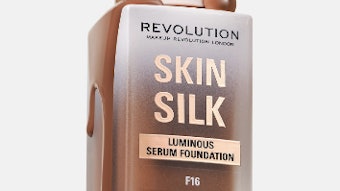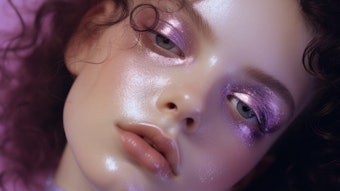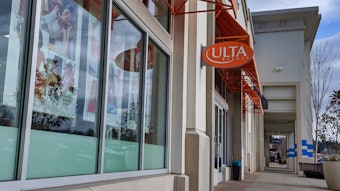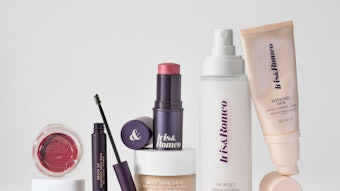Although color cosmetics continues to lag slightly behind overall cosmetics and toiletries growth of 5.4% on 2005 numbers, the color category’s growth of 5% in 2006 represents the highest year-on-year increase since 2001. From a traditionally fashion driven, highly innovative sector, sales in 2006 were propelled by demand from the emerging markets of Latin America and Eastern Europe, where color cosmetics are already perceived as a staple part of the beauty regime. The category’s future prospects are also looking strong, with sales set to exceed $40 billion in 2011, maintaining color cosmetics’ position as the third largest category behind skin care and hair care respectively. Manufacturers are employing innovative tactics to stretch consumer spending in the mature markets, and going forward, there are substantial opportunities to maximize sales in developing regions.
Emerging Markets Outperform
This upturn in fortunes in color cosmetics is largely due to Latin America and Eastern Europe, where recent economic prosperity is allowing consumers to spend more on nonessentials. With real GDP growth of 6.5% in 2006, Eastern Europe was the world’s fastest growing region in economic terms. Furthermore, disposable incomes in both Eastern Europe and Latin America expanded by 18% in 2006, fuelling gains across a range of categories. Euromonitor International’s research shows color cosmetics rose by 10% in Latin America and 13% in Eastern Europe during 2001–2006, enlarging the sector by a combined $1.4 billion.
Double-digit growth has been the norm in Eastern Europe in recent years, although the market did show some signs of slowing down in 2006 (from a high of more than 17% in 2003). Growth was underpinned by the increasing spending power of the female population—which had a positive impact on sales of premium and masstige products, particularly for foreign brands, which are perceived to be of higher quality and therefore hold a certain cachet. Sales were also positively influenced by the success of direct selling companies such as Avon and Mary Kay, by offering consumers good quality products at competitive prices.
Lip products represented the largest and most dynamic subsector, with sales increasing by 12% in 2006 to exceed $1 billion. A lipstick is a must-have product for most Eastern European women. In Russia, for example, research carried out by MAGRAM Market Research suggests that 90% of women in the 16–55 age group wear lipstick every day.
Growth forecasts to 2011 for Eastern Europe also remain positive. On a national level, Ukraine appears to offer the best development prospects, with sales expected to increase 9% per year between 2006 and 2011. Indeed, the market’s future potential has been recognized by Avon, which has invested $4.8 million in the construction of a new office and warehouse complex in the country and named it as a priority market for the future.
Asia-Pacific to Drive Growth
Despite falling short of the global average growth rate in color cosmetics in the 2001–2006 period, Asia-Pacific looks set to be the most dynamic region to 2011, with Euromonitor International forecasting average annual growth of 5%. This can, in part, be attributed to economic recovery in Japan, the region’s largest market. Sales of $30 billion in Japan account for almost 50% of the region’s sales. Manufacturers are having particular success in targeting the most important Japanese consumer group for color cosmetics—working women in their 20s and 30s who demand convenience and portability. SK-II’s Air Touch Foundation, for example, proved immediately popular following its launch in August 2006. The product is sold in unique round packaging and uses a battery-operated cartridge system.
Most importantly, however, it is designed to fit the contours of women’s hands, compact enough to be carried in a handbag and elegant enough to be used in public.
China, in absolute terms, will contribute significantly to the region’s growth, with the market for color cosmetics set to rise by $0.6 billion by 2011. Although color cosmetics is moving from being perceived as a luxury to an everyday item in the minds of many Chinese women, this trend is confined to urban areas. The key to unlocking the future growth potential in this category in China will lie in increasing penetration in the rural areas. Direct sellers—including Avon and Oriflame, which have licenses in China—are well placed to capitalize on this potential.
Although the Indian market for color cosmetics, with sales of $4 billion in 2006, is only one-third the size of China, it is one to watch out for in the future. Renowned for its use of makeup, much of its population still rely on natural, homemade products. However this is set to change as consumers become more demanding, and with India witnessing the fastest value growth for color cosmetics in the world, more and more international players are expected to make their foray into the country. Existing brands are expected to increase their product offerings and presence nationwide.
All About the Eyes
Fashion trends always have a major influence on color cosmetics, impacting both seasonal color collections and the demand for certain products, particularly eye makeup and lip products. Globally, eye makeup was the fastest growing subcategory, with 5.1% growth in 2006 to reach sales of $9.4 billion. Rimmel London’s color collection epitomizes the trend for pale lips and heavy eyes, and it is a look that has been heavily reinforced by celebrity proponents.
In terms of innovation in developed markets, this has meant a particular focus on mascara. Formulations are getting thicker, longer lasting and appearing with added benefits—such as curling, moisturizing and effects that make lashes appear fuller, longer or more defined. Delivery formats have come into their own in this subsector, with the emphasis on developing new brushes that work with the product for improved results, further enabling manufacturers to increase unit prices. A new generation of geometrically shaped mascara applicators has been turning up at department store cosmetic counters and drugstores across the developed markets. Some of the new brushes have unevenly notched nylon bristles that make them resemble corrugated toothbrushes (e.g. Maybelline New York’s Lash Stylist). Other brands are replacing rigid fiber brushes with flexible plastic combs or rubbery prongs (e.g. Chanel’s Inimitable mascara).
To continue reading this article, please click here. You will be redirected to GCI magazine's Web site.










